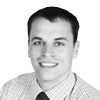Business Clinic: Spring cropping – beans or fallow?
 © Miek Powles/FLPA/Rex/Shutterstock
© Miek Powles/FLPA/Rex/Shutterstock Whether you have a legal, tax, insurance, management or land issue, Farmers Weekly’s Business Clinic experts can help.
Here, Duncan Winspear of Savills’ food and farming team offers advice on spring cropping.
Q: I have left an area of land for spring cropping and was thinking of putting beans in to meet greening requirements but would I be better leaving it fallow?
A: Either leaving land fallow or putting in a spring crop has advantages and disadvantages in terms of greening requirements and crop margins.
Fallow land and a spring crop, such as beans, are both land uses recognised as cropping under the ‘three crop rule’ and both options contribute to the Ecological Focus Area (EFA) requirements.
 Duncan Winspear, Savills food and farming team
Duncan Winspear, Savills food and farming teamEFA requirements
When looking at the greening element of each land use, farms with more than 15ha of arable land that are not made up of more than 75% grassland or fallow must put 5% of the total arable land into EFA options.
In terms of meeting the EFA requirement, fallow land cannot be used for production between 1 January and 30 June.
One hectare of fallow land equals one hectare of EFA. Beans can also contribute to the EFA element of greening, as they are a leguminous crop. One hectare of beans is equivalent to 0.7ha of EFA area.
See also: 2016 BPS payments – what you need to know
Potential advantages of using a spring crop include possible additional opportunities to control grassweeds compared with putting the land into winter cereals.
Beans also have the benefit of generally improving soil structure due to the depth of the roots.
Additionally, beans will leave residual nitrogen for the following crop (typically wheat), but the level of residual nitrogen left will vary depending on the season and the biomass generated by the beans both above and below ground – typical levels would be 40kg/N/ha.
If a price of £190/t is used for ammonium nitrate with 34.5% nitrogen content, this equates to a saving of £22/ha on purchased nutrients.
Cash-flow advantages
Like other spring crops there can be cash-flow advantages to spring beans compared with winter-drilled crops, as typically the variable costs/ha are lower than for winter cereals.
The nitrogen-fixing capability of legumes further reduces costs on a unit basis compared to crops needing nitrogen applications.
The late maturity of spring beans can be a concern, especially in northern and western regions, both in terms of harvesting dates and soil conditions for establishment of the following cereal crop.
In contrast fallow land provides an opportunity for either oilseed rape or a first wheat to be established in good time, which can be important on marginal farms or those situated higher above sea level.
Under EFA rules, weeds can be controlled on land used for fallow, so this can be used as an opportunity to control blackgrass or other problem species.
Disadvantage of fallow
The biggest downside of leaving land fallow is obviously the lack of crop output, although on some mixed farms, the opportunity to use fallow land for grazing or to take a hay cut after 30 June can aid forage and livestock enterprise output, especially where a grass sward is already present on the fallow area.
Overall the biggest factor in the decision on whether to crop land with spring options like beans or to leave it fallow is the impact on the fixed-cost structure of the business.
Where staff are employed and the arable equipment is owned then the Basic Payment income on the fallow will not be enough to cover machinery overheads (although if the fallow land enables the business to meet the overall greening criteria then this may be an acceptable trade-off).
With spring beans there is exposure to weather and price risk, but based on current budgets (see table) the crop sales should be sufficient to cover costs.
Fallow land will still require management, typically needing at least a glyphosate spray after the end of the fallow period, resulting in a loss once fixed labour and machinery costs are considered.
However, for farms where arable work is carried out by contractors, then the ability to avoid direct machinery costs by not having to pay for machinery passes (other than a glyphosate spray) on the fallow area means the fallow option can look equally attractive as spring beans.
Spring beans and fallow margins compared for different farm fixed cost structures |
||||
|
|
Own machinery and staff |
Contractor for arable work |
||
|
|
£/ha |
£/ha |
||
|
Fallow |
Spring beans |
Fallow |
Spring beans |
|
|
Yield – tonnes/ ha |
0 |
3.9 |
0 |
3.9 |
| Selling price – £/tonne |
0 |
140 |
0 |
140 |
Income |
|
|
|
|
|
Crop sales |
0 |
546 |
0 |
546 |
|
Basic Payment |
205 |
205 |
205 |
205 |
|
Total income £/ha |
205 |
751 |
205 |
751 |
Costs |
|
|
|
|
|
Seed |
0 |
90 |
0 |
90 |
|
Sprays |
15 |
120 |
15 |
120 |
|
Fertiliser (P&K) |
0 |
40 |
0 |
40 |
|
Depreciation, labour & other fixed machinery costs |
299 |
299 |
0 |
0 |
|
Fuel |
10 |
64 |
0 |
0 |
|
Contractor costs (all crop work £/ha) |
0 |
0 |
20 |
330 |
Total Costs |
324 |
613 |
35 |
580 |
| Margin after machinery and labour costs £/ha |
-119 |
138* |
170 |
171* |
|
Using Savills Arable Benchmarking Data and current quoted prices *Spring beans can reduce the nitrogen costs for the following crop, therefore improving its margin |
||||
Do you have a question for the panel?

Outline your legal, tax, finance, insurance or farm management question in no more than 350 words and Farmers Weekly will put it to a member of the panel. Please give as much information as possible.
Send your enquiry to Business Clinic, Farmers Weekly, RBI, Quadrant House, The Quadrant, Sutton, Surrey SM2 5AS.
You can also email your question to fwbusinessclinic@rbi.co.uk.
